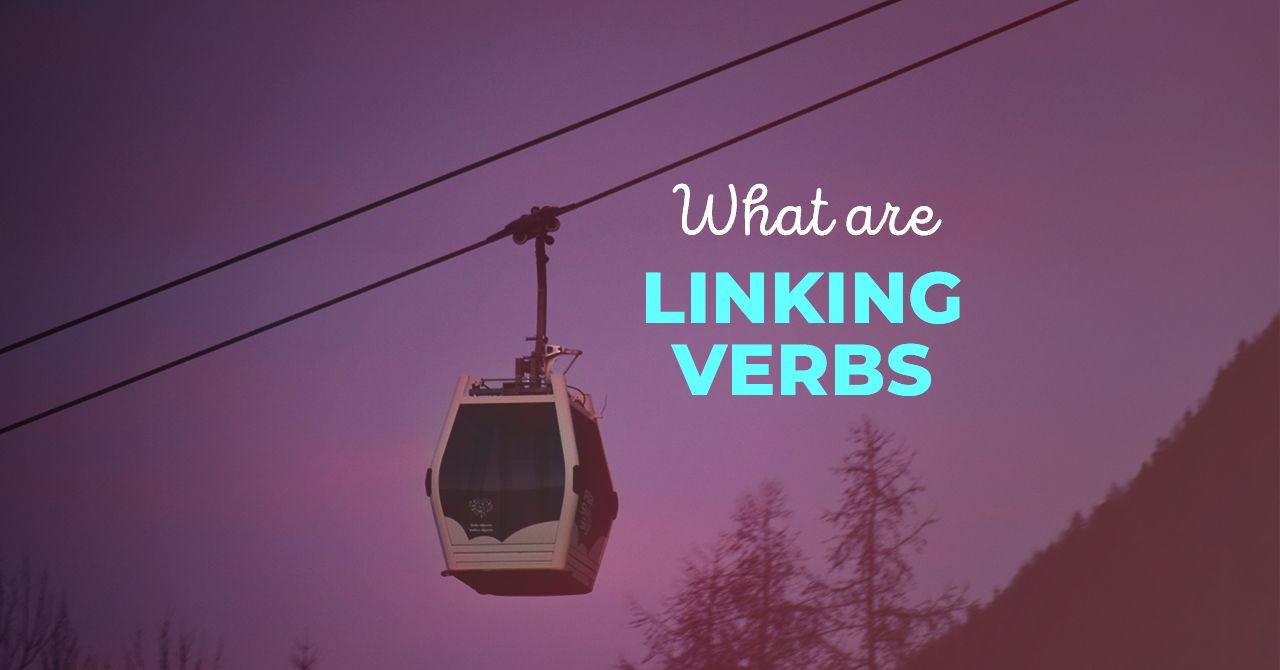
How to Identify Linking Verbs with Examples
Linking verbs can describe a state of being, a result of something, or even one of the five senses.

Get a FREE guide!
Want to sound like a native English speaker?
Get our free PDF with top tips that work.

Check your email!
Linking verbs are different from all other verbs. In fact, they go against everything we ever learned about verbs. Most people were taught in school that verbs are “doing words.” First of all, verbs are one of the key grammatical elements in the English language. They are, by definition, words that describe an action. This action is performed by the subject of the sentence.
Typical examples of verbs are “Peter reads magazines” or “She goes to the grocery store on Saturdays.” In these sentences, the subject is actively doing something. Linking verbs serve a different purpose altogether.
What are linking verbs?
Linking verbs are very different because they do not express an action. Their purpose is to connect the subject to additional information about the subject. These verbs do not have an object.
Linking verbs can describe a state of being, a result of something, or even one of the five senses.
The complement to which the subject is linked can be either an adjective that describes the subject, called a predicate adjective, or a noun that describes the subject called a predicate noun.
The word order when using linking verbs must always follow the same formula:
Linking verb “to be”
One of the most used verbs in the English language is the verb “to be,” but did you know it is a linking verb? That’s right, the following forms of the verb “to be” are all linking verbs:
Present tense: am/are/is.
Past tense: was/were.
Other forms: can be, could be, will be, would be, shall be, should be, may be, might be, must be, have been, has been, had been.
Example of linking verb sentences with “to be”
John is a pharmacist.
Eleanor was happy to be at the show.
You were angry last night.
They are upstairs.
We might be bilingual after our year abroad.
He could be rich if he saved his money.
You would be a lawyer now if you had gone to law school.
I’ll be relieved once we’ve landed safely.
She’s been upset since she heard the news.
I must be sick. I have a stomach ache.
How to identify a linking verb?
Do you need a top tip for identifying linking verbs? If you replace the verb in a sentence with any form of the verb “be,” and it still makes sense, then the original verb was a linking verb.
1. Henrietta remains in the lead.—Henrietta is in the lead.
2. Henrietta watches the race.—Henrietta is the race.
1. Jason feels tired.—Jason is tired.
2. Jason sought shelter from the storm.—Jason was sheltered from the storm.
As you can see, the first sentences in each pair make sense with the verb switched for “be,” which means that “remain” and “feel” are linking verbs. On the other hand, the second sentences are nonsensical when we insert the verb “be.” Therefore, the verbs “watch” and “seek” are not linking verbs.
What is a linking verb in a sentence?
As well as the different forms of “be,” there are two other categories of linking verbs. In the first linking verb category are the verbs relating to the 5 senses: Sound, smell, look, taste, and feel.
That poster looks wonky.
The music sounds very loud.
The kitchen smells like freshly baked bread.
This pasta tastes incredible.
This fabric feels so soft against my skin.
The second category encompasses all verbs that describe a state of being. In alphabetical order, they are as follows: Act, appear, become, feel, get, grow, prove, remain, seem, stay, turn.
My friends acted like children at the amusement park.
He appears to be intoxicated.
I became familiar with the artist when I visited his gallery.
I feel so happy right now.
Teachers get mad when kids don’t do their homework.
Children grow so quickly.
The job proved too difficult for us.
Please remain quiet when exiting the theater.
They seemed angry about the outcome of the game.
We stayed calm when we heard the alarm.
His hair turns gray when he’s stressed.
The verb “feel” could fit into both categories. It is linked to the sense of touch, as it is the literal feel of something in your hand or your skin, but it can also be how you feel emotionally, in which case it is a state of being.
Things to note about linking verbs
We sometimes class linking verbs as true linking verbs. To become, to be, and to seem are the only verbs in this category. They are called “true” or “permanent” because they cannot describe an action. They are only ever linking verbs. Other linking verbs are not considered “true” because they can be used to connect a subject to a subject complement or as action verbs.
Remember to use the method mentioned earlier to check if a verb is used as a linking verb or an action verb in a sentence.
1. My birthday cake tasted delicious.
2. Everyone tasted my birthday cake.
1. The experiment proved challenging for everyone involved.
2. I proved that my theory was true.
In these examples, when we swap both “tasted” and “proved” for “was,” it reveals that the first phrase in each pair contains a linking verb while the second sentence in each pair does not.
Other English linking verbs
Finally, some verbs are only linking verbs in specific cases, for example:
Keep is a linking verb when used to mean “continue.”
Fall is a linking verb followed by “ill” or “silent.”
Go is a linking verb when used instead of “become.”
Occasionally you might come across the term copulas or copula verbs. These are simply synonyms for “linking verbs.”
To conclude, a linking verb never describes an action. Instead, it links a subject to a complement. The subject complement can either be an adjective (that describes the subject) or a noun (that identifies the subject). Remember to switch the verb in any sentence to a form of “be” in order to check whether it’s a linking verb or not.
















